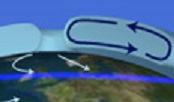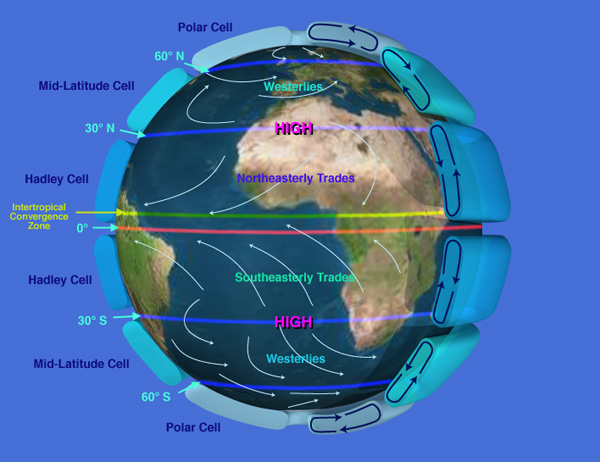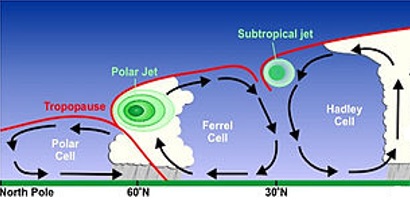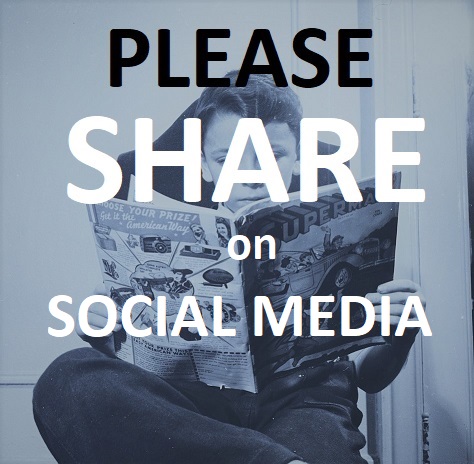NOTE: Because IPCC is a graphic novel about climate change. It celebrates the work of the Intergovernmental Panel on Climate Change. The graphic novel project is now dormant. It is published under creative commons licencing which allows you to reproduce or alter it. We encourage use of the material to further understanding of the IPCC’s work and can share the original artwork if you have a project in mind.

In general a warming world doesn’t give us colder winters overall. But it appears like it might give us cold snaps.
It’s all very complicated but here’s the “simple” version.
The sunshine beating down on the equator makes it hot in countries like Ecuador, Columbia, Kenya, Uganda, Indonesia, and others that lie half way between the Arctic and Antarctic. Hot too at sea, which makes up much of the equator.
Heat rises. The hot air along the equator rises. But once it’s risen it needs to go somewhere so at about 10 to 15 kilometers up, it flows out away from the equator toward the poles.
The further from the equator you get the less the sun is beating down from directly overhead, until at the north and south poles the sun is only delivering a glancing blow. It hardly heats those places up at all. In fact in winter the poles are leaning away from the sun (December in the north and June in the south). They don’t get any sunshine whatsoever. It’s dark 24 hours a night.

So that air warmed along the equator, it rises up and spreads out away from the equator. As it does so it cools. The air back down near earth’s surface at these latitudes is cooler too. This happens at around 30° latitude which is about where Houston, Texas and Cairo, Egypt sit in the northern hemisphere or Durban, South Africa and Perth, Australia sit in the southern hemisphere.
So you can think of two big belts of air on either side of the equator, wrapping right around the earth, circulating skyward at the equator and earthward at 30° latitude.

Meanwhile up at the Arctic and Antarctic the air is cold. Damn cold. Just as heat rises, cold air sinks, and down it comes over the poles drawing the air behind it from all around the poles. So now you have a sort of skullcap-shaped pattern of air circulating at each Arctic and Antarctic pole, with the air pouring down earthwards in the middle and up skywards at the edges.
It’s easy to see that these two types of circulation can’t easily exist beside each other because where they’d meet the polar circulation would be going up while the tropical circulation would be going down. A natural solution has worked itself out, just like putting a roller between them, a third type of circulation has arisen.

So now you can imagine a stack of three bands surrounding the earth north of the equator, and another three south of the equator. The equator-hugging bands are called Hadley cells. the Arctic and Antarctic skull-caps are called Polar cells, and the bands in the middle are called Mid-latitude or Ferrel cells.
Other factors get involved of course. As the seasons change from summer to winter these bands shimmy up and down around the equator.

Also, because the earth is spinning while all this air circulation is going on, the flow of those circulating cells gets twisted and the combination of all this results in “the jet stream.” In fact there two “jets” in each hemisphere. These jets get pushed around from winter to summer.
The Simple Part
Climate change is warming the earth. It’s risen about 1°C (1.8°F) since the industrial revolution. But it hasn’t warmed evenly. The Arctic for instance has warmed about 4°C according to the National Snow and Ice Data Center.*
The atmospheric patterns shown in the diagrams have been operating pretty much unchanged since half way back to the last ice-age. The earth’s climate is now warmer due to human caused climate change. The temperature difference between the equator and higher latitudes, especially the Arctic, aren’t as large as they used to be. This change in the system may be rattling the cage of the weather patterns we’ve been used to. These new instabilities might be sometimes allowing blasts of arctic air to escape into usually warmer latitudes.
Polar Vortex – Arctic Sea Ice – and All That
As relates to these colder than normal blasts from the arctic, scientists have been studying how the changing size of Arctic ice cover or instabilities in something called “the polar vortex” might relate to Arctic air reaching further south than we’re used to. It certainly happens, but as of yet, they can’t see the patterns clearly.
The gold standard for the study of climate change is the Intergovernmental Panel on Climate Change, the IPCC. In their 2019 Special Report on the Ocean and Cryosphere in a Changing Climate the IPCC admit that “a full understanding of complex interconnected physical processes is lacking.”
Unfortunately the scientists of the IPCC can’t agree on what exactly is happening. Even on whether it’s happening at all. As their report says, this is because changes “are not separable from natural variability.” What they mean is that as they comb through all the data, they can see lots of spikes and wobbles, but they haven’t yet been able to consistently attribute these to specific climate change causes.
It could be. But just how it could be isn’t yet clear.
The work continues.
For more info on the IPCC — in a digestible form — check out the book Because IPCC.
It’s a short, 33 illustrated pages, an upbeat, entertaining story that explains the history and science of the IPCC. The scene is 100 years in the future when the world has “solved” climate change and people are looking back, inspired by the dedication, rigor and achievements of the scientists of today.
- You can read it in 20 minutes.
- Charitable donations all go to finding new readers – please give!
- Please share it on social media.
Photo credits:
- Snowy street photo by Thom Holmes on Unsplash
- Atmosphere circulation images are sourced via Wikimedia Commons and are public domain, having been created by NASA.
- Image showing jet streams by an unknown author is licensed under CC BY-SA
*As if to prove that warming hasn’t happened evenly the Antarctic has warmed less than 1°C, and in some places seems even to have gotten colder.


